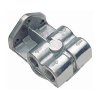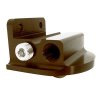I have a 351w. I just got the Speedhut 7 gauge package.. neat stuff.
Question? where is a good place to put the oil temp sensor?
Question? where is a good place to put the oil temp sensor?
I had mine in the top of a Canton oil pan for a year. I moved it to one of the ports in a remote oil adapter. Now my oil temp reads 30 degrees F higher. I think when I had it in the oil pan it did not stay submerged in oil, thus the cooler reading.
Dwight
Brett
The right place to put it would be in the return side of your thermostatic oil filter adaptor.
Presumably this is not an easy place to attach it....


Ditto Alan's last suggestion.
Canton 5065 Oil Filter holder.

Chuck -- I was looking for the Canton 5065, and think the Canton number is actually 22-625. Beautiful part.
View attachment 52903
